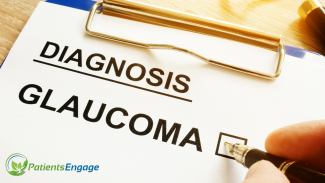
After the age of 40 everyone should go for an eye test as glaucoma is largely asymptomatic and can lead to significant vision loss and blindness in the advance stages, says Dr. Nishant Kumar, Consultant, Ophthalmology at Hinduja Hospital, Khar.
What is the main cause of getting glaucoma?
Glaucoma is an eye disease that is often associated with elevated intraocular pressure, in which the eye (optic) nerve is damaged. As this nerve gradually deteriorates, it can lead to loss of vision and even blindness.
People above 60 are at risk. Also those who have a history of glaucoma in the family have increased chance of getting the disease.
What is usually the first sign of glaucoma?
Waiting for the signs means waiting too long as glaucoma is largely asymptomatic and by the time people get the first sign of glaucoma, the disease could have progressed to an advanced stage. Therefore, after the age of 40 everyone should go for an eye test where the eye pressure and the nerve of the eye will be checked for glaucoma. The only way to diagnose glaucoma is by screening rather than waiting for the symptoms.
In the later stage of the disease one can experience loss of field of vision and loss of vision. In the rarer form of closed-angle glaucoma people can experience severe pain, redness, halos (rainbow-colored circles around lights) and headaches.
What are the different types of glaucoma?
Primary Glaucoma - This form of glaucoma is also known as chronic glaucoma. It is caused by surplus pressure in the eye, known as intraocular pressure. This surge in pressure is usually due to inappropriate drainage of fluid within the eye. Due to this, pressure increases, and it can damage the optic nerve. As there are no symptoms that patients would experience, most of them may not even understand that their vision is being affected. It is a serious condition that can lead to loss of vision. There are two types of primary glaucoma.
- Open- angle glaucoma (OAG) : Open-angle glaucoma is the most common of the syndromes of this disease. It can occur either unilaterally or bilaterally. Recent estimates place the incidence at about 80%. The incidence was highest in blacks and lowest in whites. It is chronic in nature, usually progressing at a slow rate and increasingly affecting vision over a period of years or decades. Often there are no overt signs or symptoms of the disease up to the point of vision loss.
- Closed – angle glaucoma : Closed-angle glaucoma is more serious than OAG. This form of the disease may develop quickly, often with associated pain. It’s mostly to do with the anatomy of once eye. The condition is similar to a clogged bathroom drain where something covers the drain opening, completely preventing fluid from leaving the drain.
Secondary Glaucoma - The difference between primary and secondary glaucoma is that secondary glaucoma is caused by external reasons. Secondary glaucoma refers to any form of glaucoma in which there is an identifiable cause of increased eye pressure, resulting in optic nerve damage and vision loss. Secondary glaucoma may be caused by an eye injury, inflammation, certain drugs such as steroids and advanced cases of cataract or diabetes.
Can the progression of vision loss due to glaucoma be slowed or stopped?
Unfortunately, it can’t be stopped but significantly slowed with correct treatments. Glaucoma cannot be cured, but you can stop it from progressing. It is most often treated by lowering pressure in the eye with drugs, laser surgery, or traditional surgery. However, these treatments can only preserve the remaining vision. They don’t improve or restore vision that has already been lost due to glaucoma.
What are the two common complications of glaucoma?
Loss of field vision and blindness are the two common complications of glaucoma.
What percentage of glaucoma patients go blind?
With so many advanced medical treatment options and surgical treatments, blindness due to glaucoma can be avoided with right intervention. However, unfortunately, if the disease gets picked up late it is impossible to reverse those changes leading to blindness. Hence the need for early detection of the disease is very important.
How is glaucoma treated?
Glaucoma is treated by lowering your eye pressure. Depending on patients situation, there are several treatment options like eye drops, there are multiple drops now a days, which was not available earlier. One can start with drops and if it fails to work, then laser treatment, surgery or even combination of any of these also can be an option.
Can exercise reduce eye pressure?
There is not strong evidence to prove that exercise can reduce eye pressure.

Dr. Nishant Kumar, Consultant, Ophthalmology at Hinduja Hospital, Khar.
















